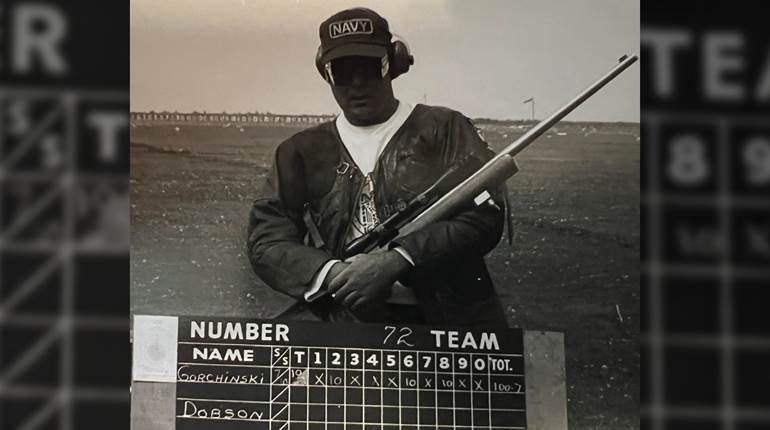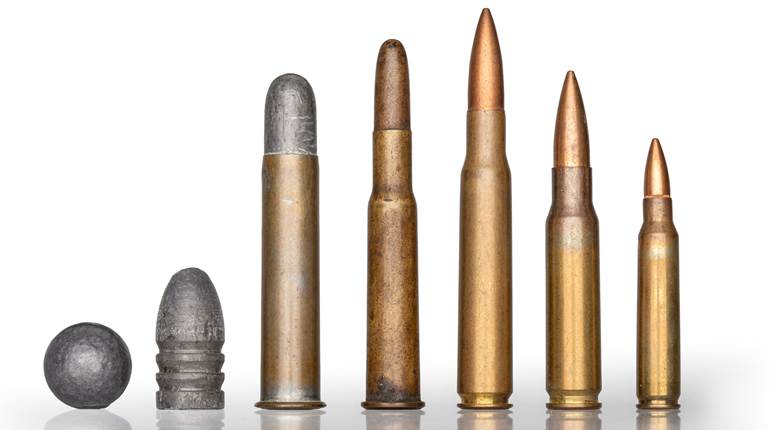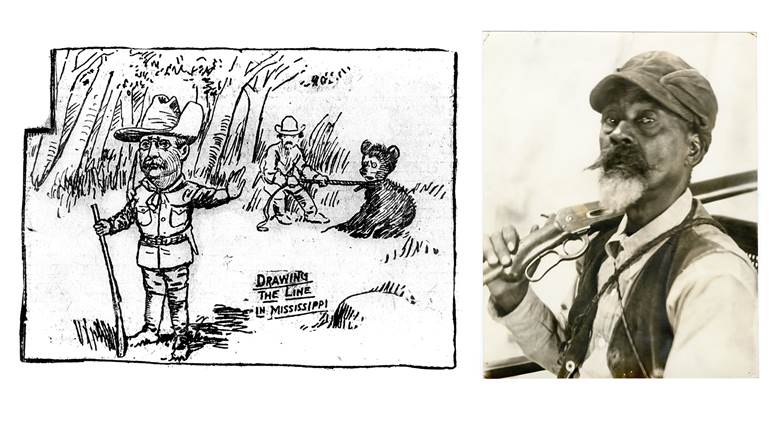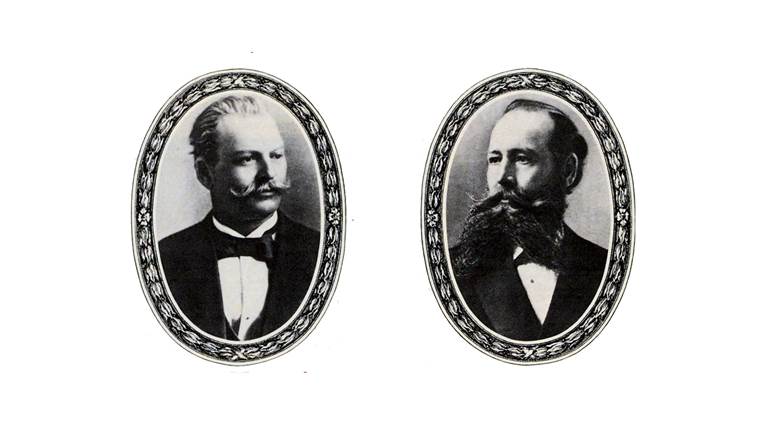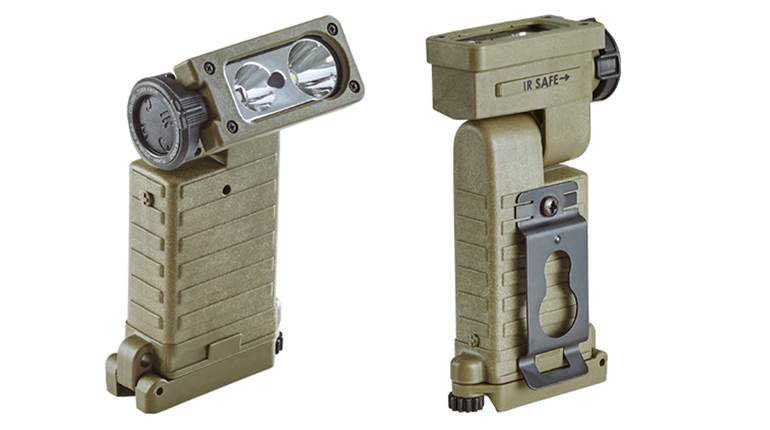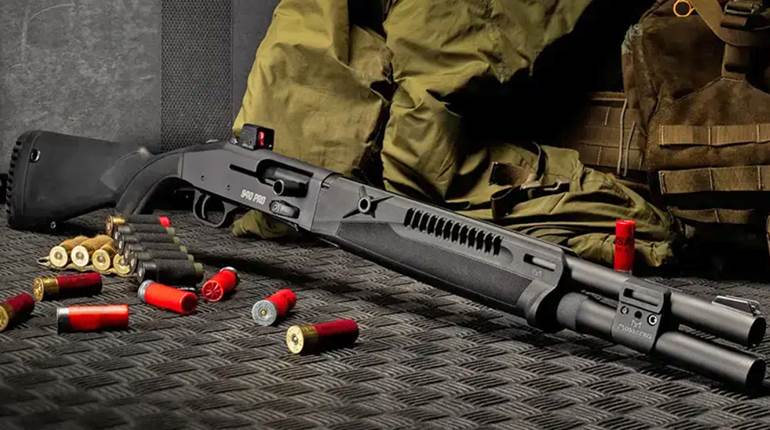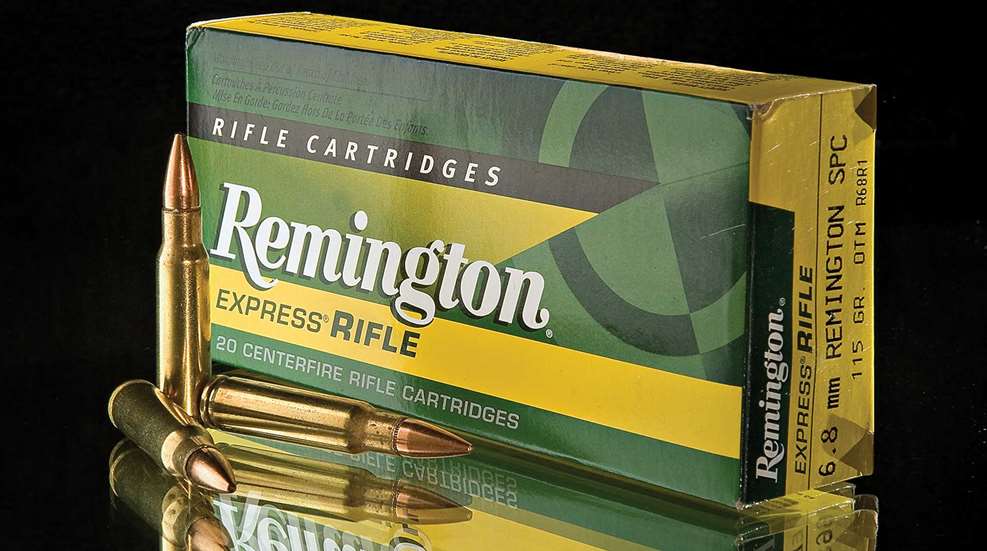
Cartridges in the .280" (7 mm) range have long been considered more advantageous for military use than “full power” cartridges—such as the .30-’06 Sprg. or .308 Win.—save for a few “die hards” who insist on having a military cartridge capable of engaging targets beyond 500 meters. At closer ranges, smaller diameter bullets are just as effective and enable the soldier to carry more ammunition while maintaining lethality at realistic combat ranges.
Indeed, when I was undergoing infantry training at Fort Benning, Ga., in the early 1960s, marksmanship training emphasized that in combat, targets were fleeting in nature and rarely were encountered beyond 300 meters. Given this premise, the 7.62x51 mm (.308 Win.) M14 rifle of the time was overkill.
In the early 1950s, the British developed a cartridge in .280 caliber that would have changed history had it been adopted. The British candidate for a new NATO “light rifle” was the EM2, a bullpup configured firearm that fired a 130- or 140-gr. 7 mm bullet at a little over 2500 f.p.s. The U.S. Army, however, insisted on a “full power” cartridge, embodied in the 7.62x51 mm, whose ballistics are very similar to those of the venerable .30-’06, because improved propellant technology allowed the case and overall cartridge length to be shortened. After pushing NATO to adopt its “full power” cartridge, the United States—along with the rest of NATO—adopted the 5.56x45 mm (.223 Rem.) some 10 years later. If the 7.62 was overpowered, many believed the 5.56 mm was distinctly underpowered for military use.
The original M16 was conceptually quite different from the current issue rifle. It was designed to fire a 55-gr. bullet from a 20" barrel at more than 3000 f.p.s. The M16 eventually performed adequately after initial propellant problems earned it a reputation for a lack of reliability. Two changes have transformed the M16 small-arms family into something that Gene Stoner probably never envisioned. First, the M16A2 rifle is closer in concept to the M14 than to the original M16, as it fires a 62-gr. bullet at slightly lower velocity than the original. Unlike the M16, the M16A2 can engage area targets out to 800 meters. The second transformation came with the standardization of the M4/M4A1 carbines in the U.S. Special Operations community. The 5.56x45 mm M855 cartridge launches a 62-gr. bullet at 2900 f.p.s. through an M16A2 but at only 2600 f.p.s. from an M4.
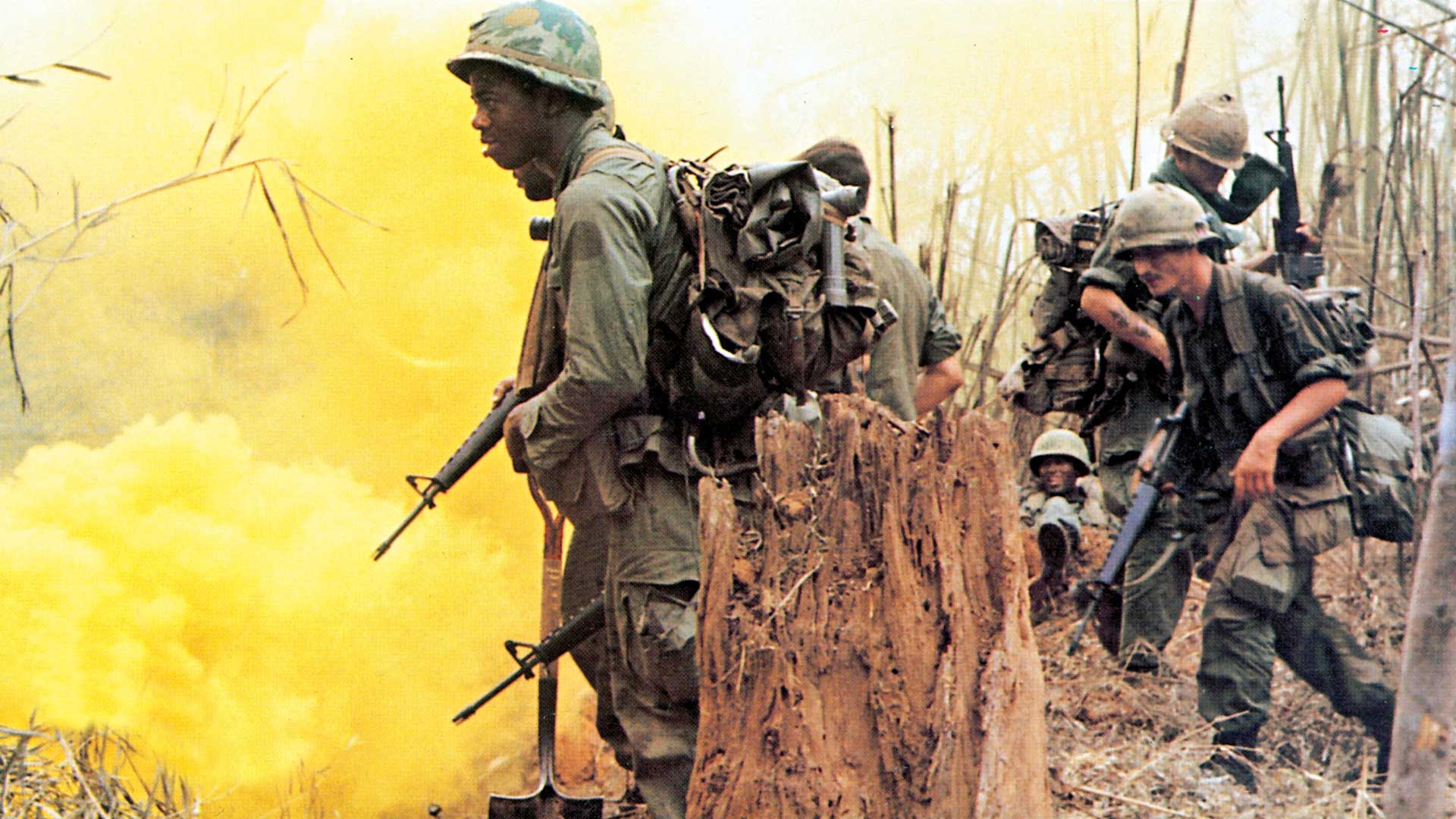
A New Cartridge
Some elements of the U.S. Army Special Operations Command, however, did not believe that any 5.56 mm cartridge, even with heavier 77-gr. bullets, would satisfy Special Forces requirements and so quietly began exploring alternatives. There were several criteria established for the new cartridge, not the least of which was that the new round should be capable of being used in existing platforms. That is, the military would not have to buy new arms, but could convert existing M4 Carbines to the new cartridge by simply adding a new upper receiver. Specific requirements for the new cartridge were as follows:
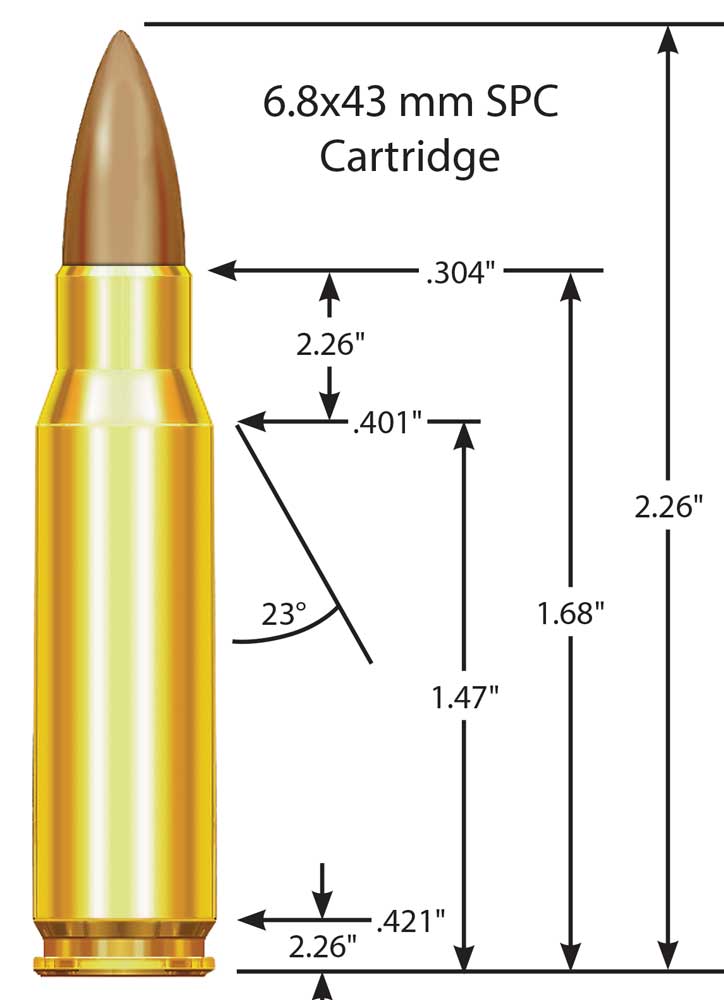
• Increased lethality versus the M855
• Increased range and energy versus
the M855
• Increased cover destruction versus
the M855
• Increased efficiency and bore life
versus the M855
When the Special Forces set out to develop a new cartridge, it realized that it could not simply change barrels and bolts. The program actually began in early 2002 when initial reports of the M855’s shortcomings started to trickle back from Afghanistan.
The new ammunition design was accomplished by Remington, working in conjunction with Army Special Forces and the Army Marksmanship Unit at Fort Benning, Ga. The new carbine upper receiver was designed by Barrett Firearms. It looked back over the entire history of intermediate class cartridges, beginning with the German 7.92 mm Kurz from World War II. The 7.62x39 mm was discarded as a candidate, partly because there are no known magazines that will reliably feed the cartridge from a standard M4 lower receiver, plus the cartridge profile is such that an entirely new magazine—and possibly a new lower receiver—would be required. Many 6 mm, 6.5 mm, 6.8 mm, 7 mm, and 7.62 mm cartridges were considered and tested, but it was ultimately decided that the 6.8x43 mm Special Purpose Cartridge (SPC), with a 115-gr. bullet moving at 2600 f.p.s. from the muzzle offered the best combination of accuracy, lethality and reliability.
A New Platform
The conversion units are presently made by Barrett, although other makers are already tooling up to manufacture rifles and carbines in this caliber, as it is not only a very effective anti-personnel round, but should prove to be a very effective cartridge for medium-sized game. Nothing more than a new upper and magazines are necessary to change an existing AR into a 6.8. Barrett offers both conversion uppers and complete carbines and rifles. Barrels are produced with a hard chrome lining and a 1:10" twist rate.
Modifications to the upper receiver are limited to the barrel and barrel extension, extractor and bolt face, but there are a number of other changes to the rifle’s external configuration. All Barrett M468s come with the A.R.M.S. SIR System, a rail adapter interface that allows mounting optics and accessories. The SIR allows the barrel to be fully free-floated along its entire length in addition to enhanced versatility over conventional handguard systems. The “M468” designation, incidentally, is a combination of the year in which the carbine was introduced, 2004 and the 6.8 chambering.
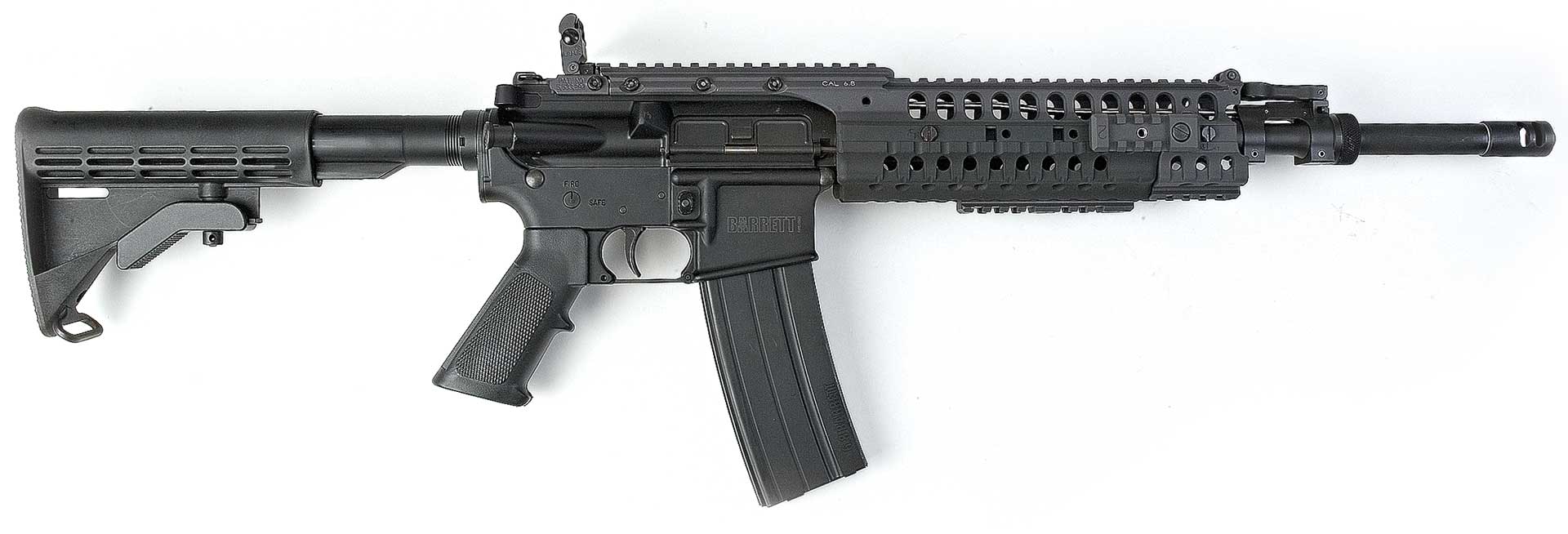
Because the 6.8 mm’s bore diameter is significantly larger than the original 5.56 mm, the barrel’s external diameter has been increased and the gas block modified. Barrett chose to add mounting bosses for the gas block, which also acts as the front sight base and suppressor mounting point. The gas block is mounted using roll pins rather than the tapered pins of the original M16. This ensures that the gas block stays in place and that the interface grooves do not adversely affect barrel wall thickness.
Since the M468 is designed for use with optical sights, the open sights fold flat out of the line of sight. The front sight is a Barrett design that folds flat and locks vertically. The front sight adjusts for elevation with a small tool provided with the rifle. The rear aperture sight is an A.R.M.S. design specifically intended for use with the SIR System. It has two apertures, one for long range and another for close range.
The bolt carrier is standard AR, but the bolt has been significantly modified, not only to accommodate the larger 6.8 mm SPC case head, but also for reliability. The locking lugs have been rounded somewhat to enhance lockup and relieve stress risers, and the lug opposite the extractor reduced in size to achieve more even distribution of stress. The extractor has been slightly enlarged with two springs—as opposed to the usual single spring—which occasionally causes extraction problems.
The M468’s magazine is externally similar to the standard AR magazine, but it holds only 25 rounds. Internally it is different: The 6.8 magazines’ stiffening grooves are not as deep as those on M16 magazines. I was unable to load more than 10 6.8 mm cartridges in each of several M16 magazines, and all exhibited impaired feeding.
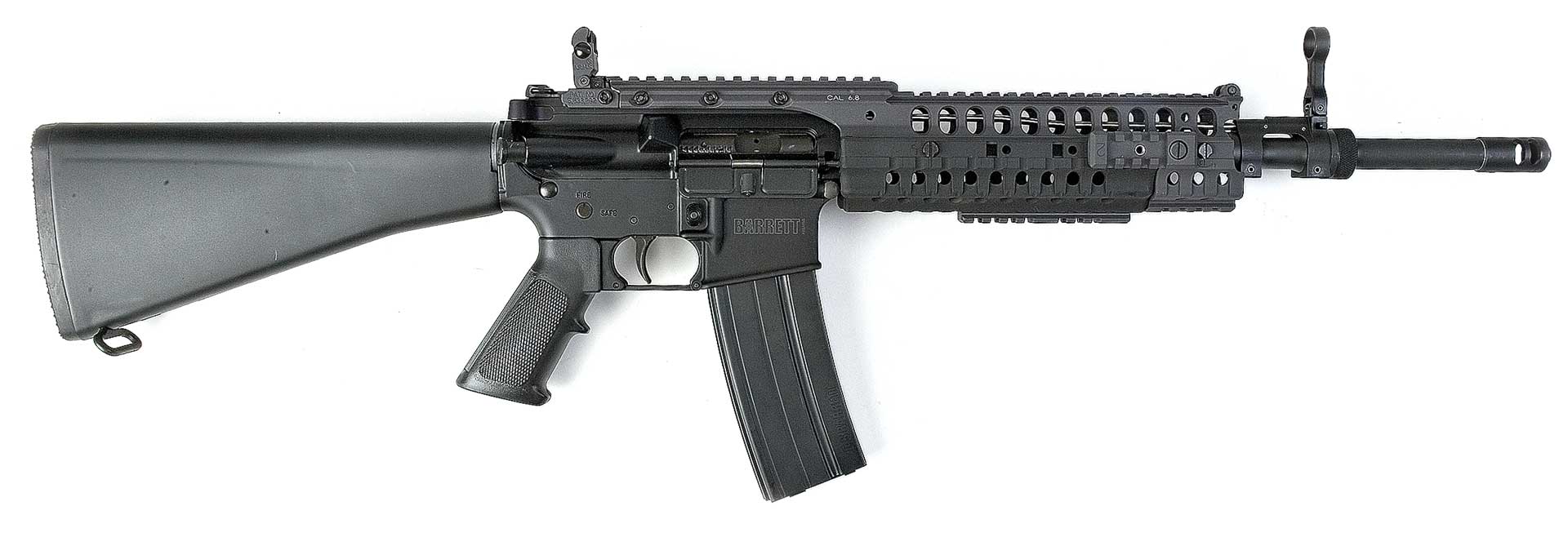
6.8x43 mm Performance
The 6.8x43 mm or 6.8 mm SPC is derived from the obsolete .30 Remington cartridge. It is significantly shorter in length, but the case head and rim diameter are identical to the earlier cartridge. The first load is a 115-gr. match cartridge, but full-metal-jacket and softpoint hunting bullets are in production. The 6.8 mm SPC’s ballistic performance is almost identical to that of the 50-year-old British .280 cartridge. The 6.8x43 mm should prove to be a good choice for deer hunting. Army personnel evaluating the new round have used it for deer hunting for more than two years, and, according to them, it delivers excellent performance.
Part of the 6.8 SPC’s development was ballistic testing in standard ordnance gelatin. During this testing, the 6.8 mm SPC was fired from barrels as short as 141⁄2". Energy proved superior to the 5.56 mm M855, regardless of barrel length from which the latter was fired. Even in barrels as short as 12", velocities are approximately 2400 f.p.s., which gives a muzzle energy of 1,472 ft.-lbs., actually greater than that of a standard 7.62x39 mm, whose muzzle energy is 1,445 ft.-lbs. Fired from a standard 16" barrel at a nominal velocity of 2600 f.p.s., the 6.8 delivers an energy level of 1,728 ft.-lbs. In U.S. Government testing at 100 yds., the average penetration of 45 rounds was 15.71" in 10 percent ordnance gelatin. The match type bullet typically expanded to 0.46" with approximately 40 percent weight retention.
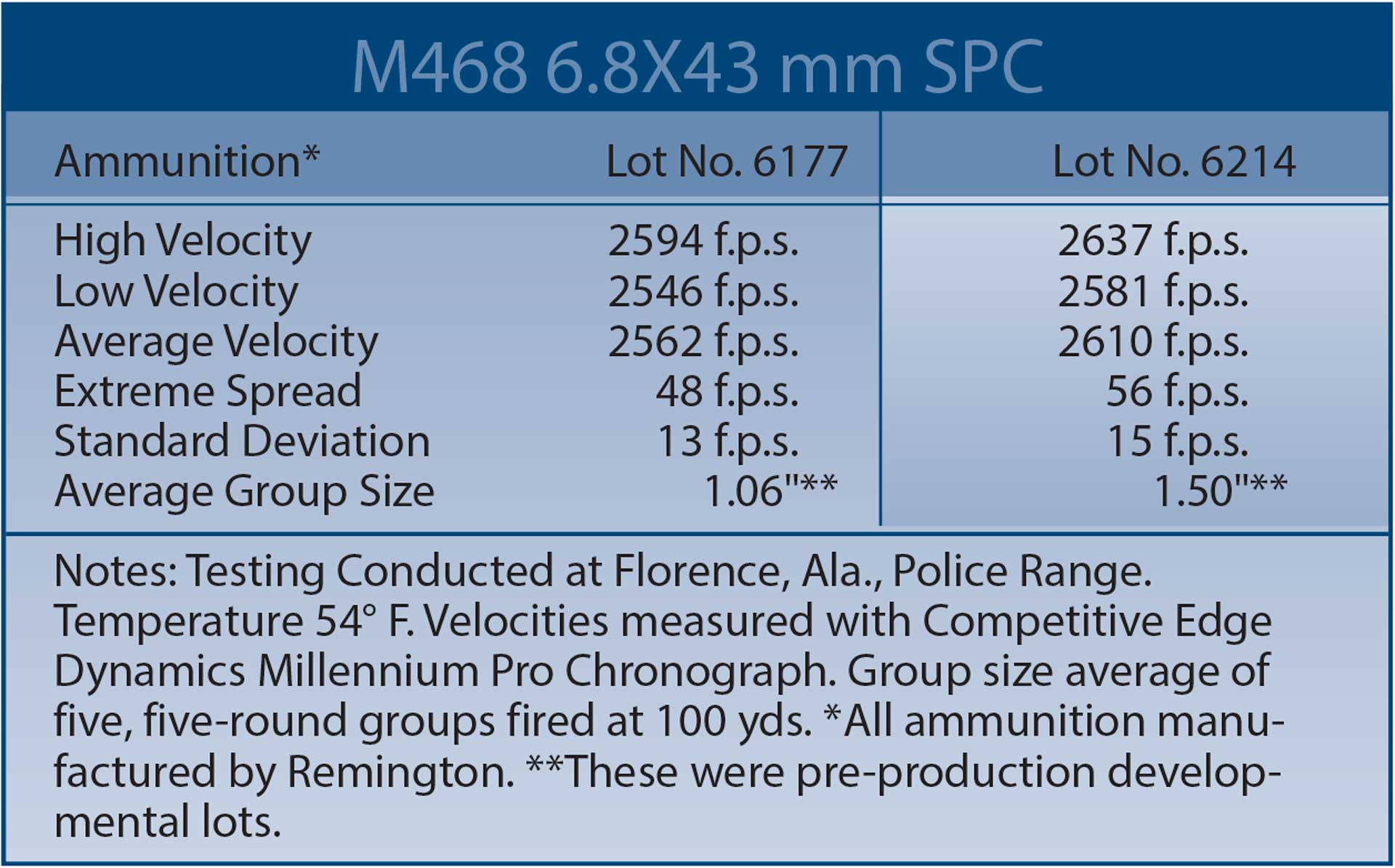
At The Range
I set up the Barrett M468 Special Purpose Carbine with a few desirable options. First, I mounted one of EO Tech’s superb Holographic Weapon Sights (HWS). Special Forces soldiers have been purchasing these sights out of their own pockets for some years because they provide the fastest target acquisition of any such device. The Army finally recognized the efficacy of the HWS and recently purchased thousands of them for issue as CQB sights.
Next, I installed a BattleGrip, available from Buffer Technologies or Brownell’s. This ingenious accessory provides storage for spare batteries needed for the EO Tech HWS. Finally, I added an Ambi-Catch, a clever device recently adopted by the Canadian military that I believe should be on all AR-type firearms. The Ambi-Catch puts a mirror image magazine catch on the left of the magazine well, enabling the shooter to use either hand to disengage the magazine.
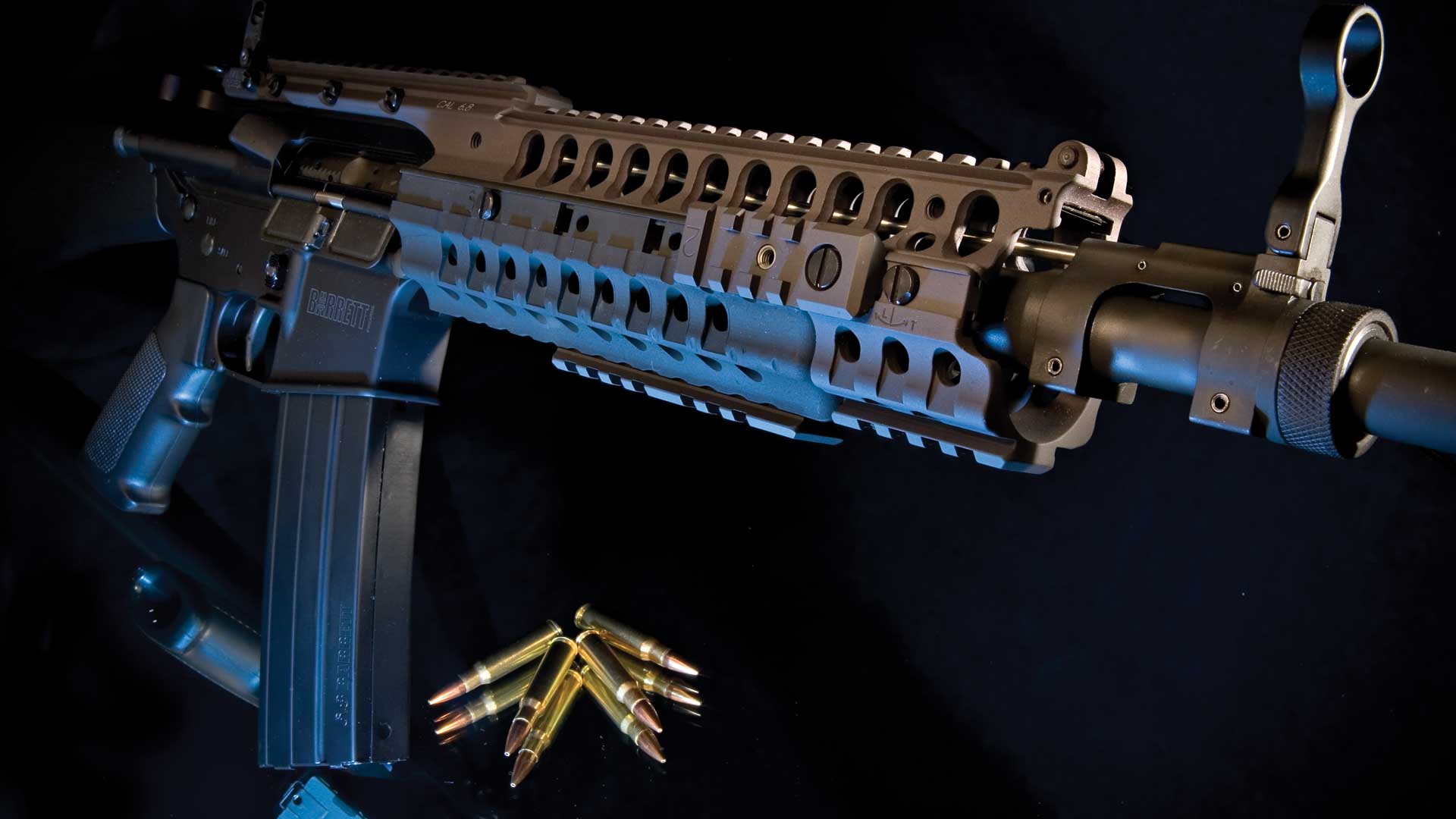
Shooting the M468 brought no surprises. The match trigger broke crisply at an average of 4 lbs. There was no perceptible creep or overtravel. The M468’s operation is exceptionally smooth. Recoil is mild, and the carbine is easy to control thanks to its excellent muzzle brake. Functioning was flawless during the 200 plus rounds expended. There was not a single stoppage of any kind. Considering that both rifle and ammunition were still in the final stages of development, this performance was exceptional.
Barrett Firearms M468 Specifications
Chambering: 6.8x43 mm SPC
Action Type: gas-operated, semi-automatic center-fire
Magazine: detachable box magazine, 5,- 10- or 25-round capacity
Barrel Length: 16"
Twist: 1:10"
Overall Length: 35"
Weight: 8 1⁄2 lbs. empty
About the only complaint was that the magazines did not drop free, but it must be recalled that the guns and ammunition evaluated for this article were pre-production units that can reasonably be expected to still have a few “bugs.” I predict that the M468 will quickly spread to law enforcement and sportsmen either as a conversion upper or as a complete carbine. Accuracy from the carbine we tested was sufficient for the rifle to eventually be considered for precision shooting, giving the M468 potential for match use.
The Barrett M468 in 6.8x43 mm SPC functions flawlessly and delivers a significantly greater “punch” than any 5.56 mm. Moreover, for the hunter or police officer who owns a “black rifle,” the M468 offers a simple way to upgrade to a cartridge that has terminal ballistics far superior to those of the .223 Rem.
—Charles Q. Cutshaw, Contributing Editor
This feature, "The Future?: Remington's 6.8x43 mm SPC" article appeared originally in the June 2005 issue of American Rifleman. To subscribe to the magazine, visit the NRA membership page and select American Rifleman as your member magazine.












